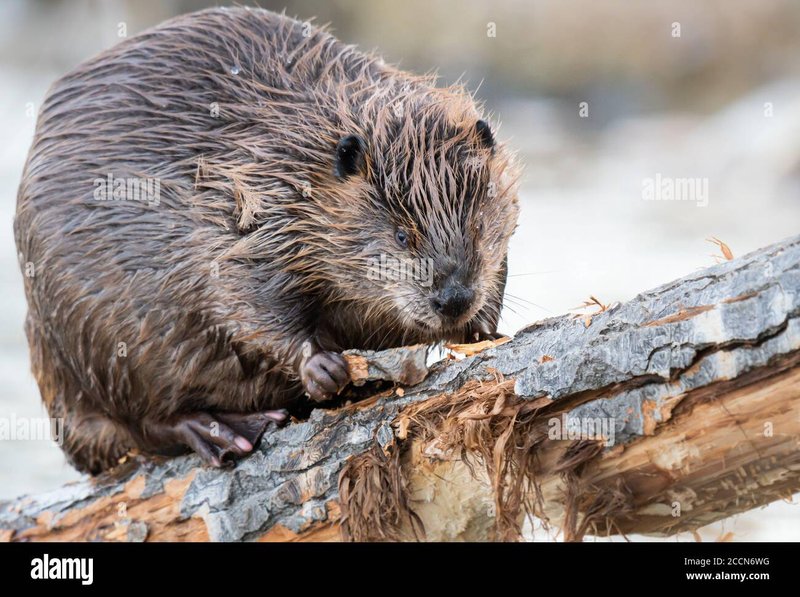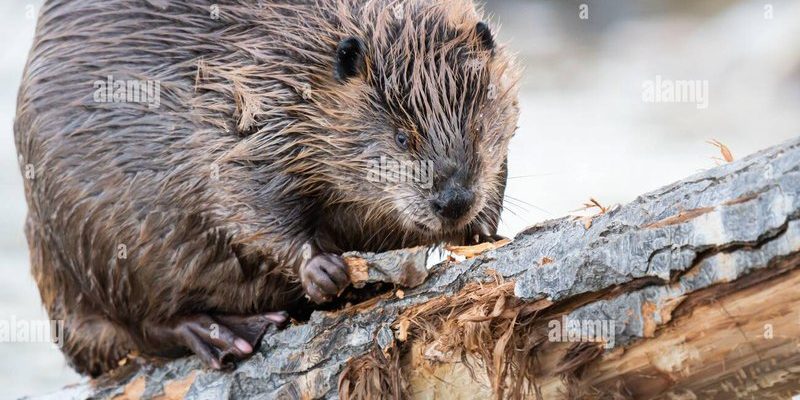
Beavers are known for their impressive building skills, crafting dams and lodges that are vital for their habitats. Seeing a beaver in its natural environment can be thrilling but also a little daunting, especially if you’re unsure how to behave. Understanding how to react can help both you and the animal have a safe and enjoyable experience.
So, let’s dive into some practical tips and insights on what to do if you encounter a beaver in the wild.
Stay Calm and Observe
First things first, if you see a beaver, it’s essential to stay calm. These furry creatures are more curious than aggressive. If you’re lucky enough to have a front-row seat to one of their performances, take a moment to appreciate what you’re witnessing.
Why Observation Matters
Observing the beaver allows you to learn more about its behaviors. For instance, you might notice how it uses its impressive tail to slap the water, a signal to other beavers. Rather than rushing in or trying to get a closer look, appreciate the moment from a distance. This is not only safer for you but also less stressful for the animal.
Keeping Your Distance
Generally, it’s best to maintain a distance of at least 50 yards. This gives the beaver space to continue its activities without feeling threatened. If the beaver notices you, it might dive into the water or retreat to its lodge. And honestly, that’s a good indication it wants some alone time.
Understanding Beavers’ Behavior
You might be wondering about why beavers behave the way they do. They are primarily busy creatures, often engaged in activities like building dams, gnawing on trees, or swimming. Knowing their behavior can provide insight into how to interact (or not) with them.
Beaver Communication
Beavers communicate through a variety of vocalizations like whistles, grunts, and even tail slaps. These sounds can convey different messages, such as alerts about predators or calls for their family members. If you hear a tail slap while observing, it’s your cue to remain still and quiet—like a stealthy ninja.
Signs of Distress
If a beaver starts showing signs of distress, such as excessive tail slapping or loud vocalizations, it’s best to back off even further. Beavers may feel threatened by sudden movements or loud noises, so try to respect their space. Imagine if a loud giant suddenly loomed over you—it wouldn’t be very comforting!
What Not to Do
There are some clear don’ts when it comes to encountering a beaver. Here’s a quick rundown to keep both you and the beaver safe and happy.
- Don’t Approach: Getting too close can stress the animal and put you at risk.
- Don’t Feed: Feeding wild animals disrupts their natural behavior and can be harmful.
- Don’t Corner: If a beaver feels trapped, it may react defensively.
- Don’t Make Sudden Noises: Keep your voice down to avoid startling the beaver.
Each of these actions not only ensures your safety but also helps the beaver maintain its natural instincts. When we encounter wildlife, fostering a respectful distance is key.
Capturing the Moment Safely
So maybe you love photography and want to capture the beaver in action. Here’s how to do it without causing stress or harm to the animal.
Use a Zoom Lens
Opt for a camera with a good zoom lens. This way, you can snap stunning shots from afar, keeping the beaver comfortable and you safe. Imagine getting a close-up of a beaver gnawing on a stick without putting yourself in harm’s way—that’s a win-win!
Avoid Flash Photography
If you bring your camera, avoid using the flash. The sudden light can startle the beaver and disrupt its natural behavior. Just think about how bright flashes can catch us off guard—it’s the same for them!
Respect Natural Light
Try to take photos during golden hour (early morning or late afternoon) when the lighting is soft. This provides better quality photos while respecting the beaver’s space. Who knows, you might capture a unique moment that could tell a story!
How to Safely Leave the Area
Once you’ve had your fill of watching this charming creature, you might wonder how to exit the area gracefully.
Leave Quietly
As you make your way out, do so quietly. Avoid loud conversations or rustling through bushes, which can disturb the wildlife around you. Think of yourself as a gentle breeze, moving through without making a sound.
Watch for Other Wildlife
Beavers share their habitat with various other animals. Keep an eye out for deer, birds, or even the occasional otter. Your respectful exit ensures you leave a peaceful environment behind for them too.
Beavers and Their Importance to Ecosystems
Understanding beavers also includes appreciating their vital role in the ecosystem. These little engineers create wetland habitats that benefit many species.
Natural Water Management
Beavers build dams that slow down water flow, creating ponds that can help regulate water levels. This contributes to groundwater recharge, helping plants and animals flourish in the area.
Habitat Creation
Their activities can create rich environments for fish, amphibians, and countless plant species. Think of them as nature’s builders, crafting homes for many other creatures.
Biodiversity Boosters
By creating diverse habitats, beavers support biodiversity. Their work provides areas for various species to thrive, significantly impacting ecosystem health. It’s a beautiful reminder of how interconnected nature can be.
Encounters with wildlife like beavers can be both exciting and educational. If you come across one in the wild, remember to stay calm, observe from a distance, and respect their space. By doing so, you not only ensure your safety but also help protect these fascinating animals.
Nature has its way of reminding us of the importance of coexistence. The next time you see a beaver, take a moment to appreciate its role in the ecosystem. After all, every encounter is a chance to learn something new!

